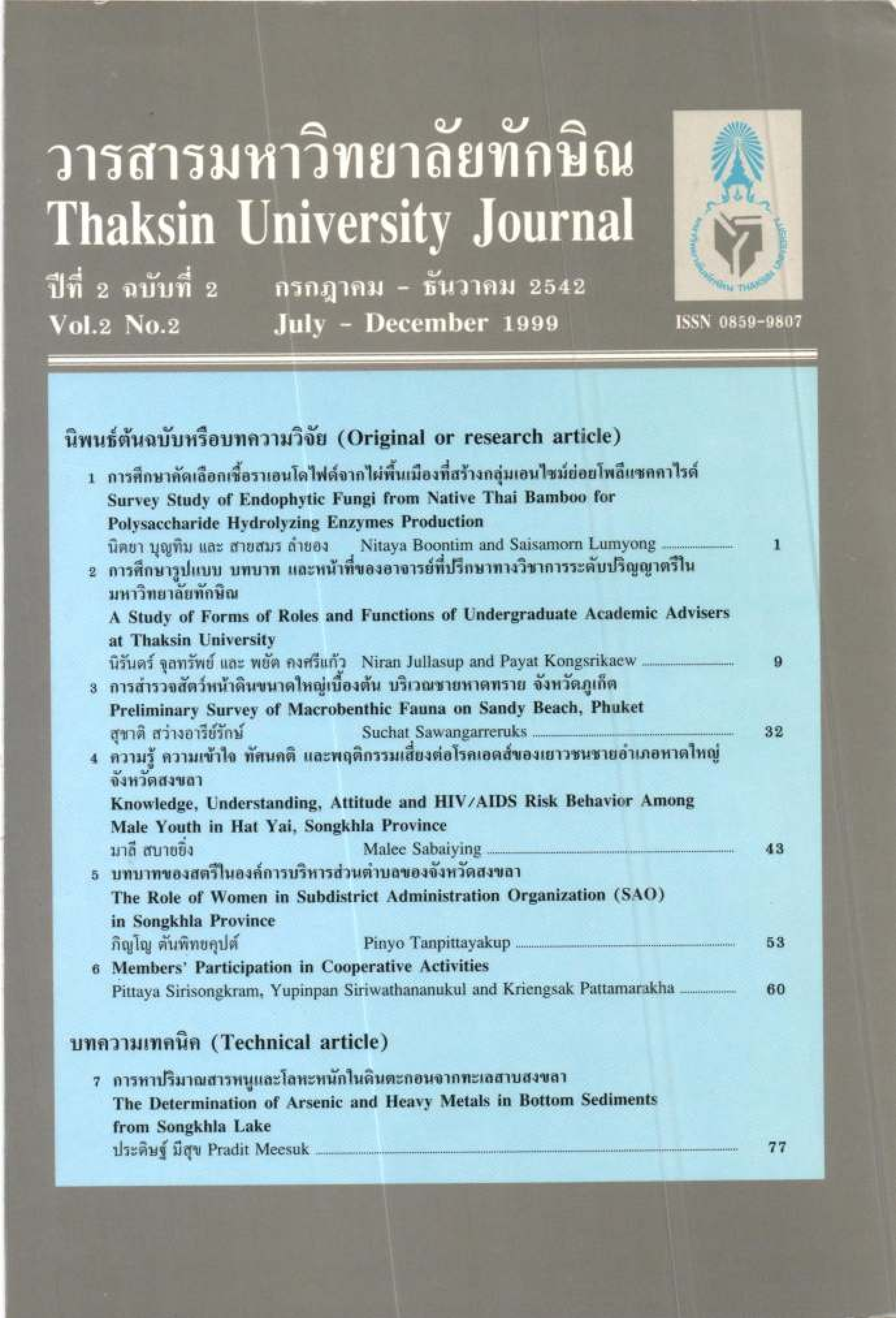การศึกษารูปแบบ บทบาท และหน้าที่ของอาจารย์ที่ปรึกษาทางวิชาการระดับปริญญาตรีในมหาวิทยาลัยทักษิณ
Main Article Content
Abstract
The objectives ol this research werc to study thc existin-s organization of undergrLduate academic advisers at Thaksin university, the opinion of acadcrnic advisers, regular and evening students toward the roles of academic advisers as rctuallv perlbrmed and as expected, and the correlation between dre tctual and expected roles of academic advisers as perceived by academic adviscrs and students. The samplc consisted of 626 undcrgmduate irdvisers to rcgulir and evening students of the Faculties of Science. Humanities and Social Scicnces, and Education of Thaksin University in the tggz academic year. The research instrument wts a questionnairc about thc status of thc respondent and general intbnr.ration thereot', and rating-scale items as well as open-cnded questions. The data analysis involved the rates of tiequency of questionnaire items, rneans. variances. standard deviations. conelations, and comparative means between groups.
The research findings rnay be summitrized as follows.
As fbr the organization of academic adviscrs at Thaksin University: most acaclemic advisers were in the same deparunents and lacultics as their advisccs. maintained no fixed schedules of meeting with their advisees nor posted their tcaching schedules at their oilices, were not in possession ol' their advisees' class schedules, were responsible tbr 21-30 advisees cach, advised studenls of more than one class stmding, and had taught or were teaching their advisees. concerning the rolcs of academjc advisers. it was found that most academic advisers met their advisees as Sroups once each semester, and the |nain puryoses of individual meetings with academic advisers were to obtain the advisers' signatures tbr registration, for addition and withrirawal of courses, and for issuance of documents of certification. From the comparative analysis of actual and expected roles as perceived by academic advisers and students, expected roles were found to be significantly higher statistically than actual roles among male as wcll as female advisers, advisers in all faculties, and advisers with teaching experience and Iess or more than ten years of service as advisers. Similnrly, male and female students of all classes md faculties, regular and evcning, perceived the advisers' expected roles higher than actual roles at a statistically significant level.
From a comparalive analysis of dit'ferences of means between the actual and expected roles of acadcmic advisers as perceived by advisers and students, it was found that advisers diffening in sex' teaching experience, length of service as advisers, and faculty did not differ at a statistically signilicant level in their perception of the advisers' actual and expected roles. As for srudents, it was found that students ol different sexes did not diller at a statistically significant level in their perception of the advisers, actual amd expected roles, that students of different classes of standing as well as regular and evening students differed at a statistically signiticant level in their perception of the advisers' actual and exoected roles. and that students of difTerent taculties, diftered at a statistically significant level in their perception of the advisers, actual roles and did not so differ with respect to expected roles.
Based on a comparative analysis of the advisers' actual and expected roles as perceived by acatlemic advisers and students, the expected roles wete found to be higher than the actual roles at a statisticallv significant level among advisers and students, male and temale advisers and students, adviscrs and students of the Faculties of Science, Humanities and Social Sciences, and Education.


